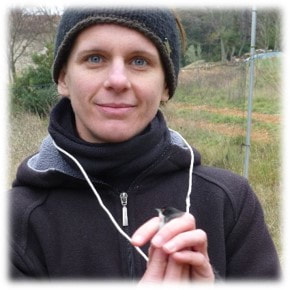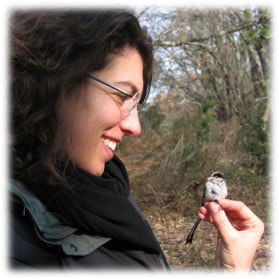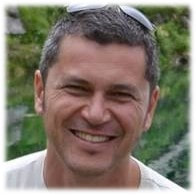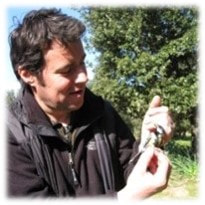 Kick off meeting for project ACACIA in Montpellier - 13/01/2023
Kick off meeting for project ACACIA in Montpellier - 13/01/2023
Observatoire des Sciences de l'Univers OREME
PI: Anne Charmantier & Claire Doutrelant
Dates: annual long-term funding since 2009
The long term Observation Platform OSU-OREME has been the only perennial support our project has had, with funding for our field observations since 2009. Check out our Tit Observation Task (TO = tache d’observation) here https://oreme.org/observation/ecopop/mesanges/
ANR project ACACIA
PI : Anne Charmantier (CEFE, Montpellier)
Main collaborators : Samuel Caro, Sarah Cubaynes, Claire Doutrelant, Céline Teplitsky & Arnaud Grégoire (CEFE), Aurélie Zwang (LIRDEF), Baptiste Chenet & Marc Romans (Parc du Lunaret), Clotilde Biard (iEES), Philipp Heeb (EDB)
Dates: 2023-2026
Title: Adapting to Cities And Climate change In interAction
Abstract: In the field of Evolutionary Ecology, climate change and urbanisation have been typically studied separately. However, urban heat island effects in cities represent a major challenge for urban dwellers facing climate change, particularly during extreme climatic events such as heat waves. The urban heat effect therefore constitutes a unique opportunity for understanding how organisms can adapt to global warming. Project ACACIA aims at 1. understanding and predicting the impact of the dual and interactive effects of climate change and urbanization using a model species in wild evolution and ecology: the great tit, and 2. using the example of great tits facing climate change as an educational tool to reconnect urban school-children to nature. We will address three tasks, based on a/ experimental data from a common garden across three forest/urban pairs in France, b/ longitudinal data on 13 forest/urban great tit monitorings across Europe, and c/ a participatory research protocol in 14 schools (minimum) of Montpellier and Paris associated with an educational device. In task 1, ACACIA will build a fine-scale map of temperatures across urbanisation gradients, provide insight into physiological adaptations (from phenotypes to genes) to warming, in forest versus city birds, and test the hypothesis that city-dwelling organisms may be pre-adapted to a warming climate because they are exposed to the urban heat island effect. In task 2, the wide European collaboration across great tit monitorings, will allow testing whether phenological adjustments to temperatures are similar across forest/urban populations, and assessing the associated evolutionary and demographic consequences of this plasticity. In task 3, we will involve schools in the collection of scientific data while providing education on science and the environment, and documenting effects to the participative device on children’s connection to nature. The three interdisciplinary tasks will produce major advances in our understanding of how the city environment may shape bird adaptation to climate change and how environmental education sciences on this topic from a young age can contribute to reconnecting humans with nature.
ANR project URBANTIT
PI : Sylvie Massemin (IPHC, Uni Strasbourg)
Main collaborators : Josefa Bleu, Anne Boos & François Criscuolo (IPHC), Anne Charmantier, Marcel Lambrechts & Arnaud Grégoire (CEFE, Montpellier), Bruno Faivre, Renaud Scheifler & Stéphane Garnier (UBFC, Dijon), Philipp Heeb & Joel White (EDB, Toulouse), Alexis Chaine (SETE, Moulis), Blandine Doligez (LBBE, Villeurbane)
Dates: 2020-2023
Title: Effects of the urban environment on individual performance at a multi-populational level in great tits
Titre: Effets de l’urbanisation sur la performance individuelle à une échelle multi-populationnelle chez la mésange charbonnière
Abstract: Urbanization leads to natural habitat loss and fragmentation, different sources of pollution and affects biotic interactions (e.g. host-parasites/pathogens). The aim of this project is to determine the effects of urban environment on health and individual selection at a multi-populational level in the Great tit (Parus major), a species common in both urban and forest sites. This interdisciplinary project (molecular, physiological, ecological and behavioural levels) is a unique opportunity to coordinate an emerging collaborative network by sharing data already obtained by each team in 5 French different paired urban-forest populations of great tits and collecting new data to address the following research objectives: i) determine the effects of different environmental stress levels on bird health and longevity and ii) evaluate the plasticity or micro-evolution of individuals. In order to test if urban characteristics influence the fitness of urban birds, we need to characterize each environment (light, noise, temperature, pedestrian and car disturbance, vegetation cover, prey availability and air pollutant cocktails. Birds can cope with these urban stressors with an alteration of physiological parameters decreasing their fitness. Reproductive success is known to be lower in urban birds but the link with physiological parameters is lacking. It was shown that pollutants directly increase reactive oxygen species, and thus alter the oxidative balance. Oxidative stress leads to oxidative damage of macromolecules and telomere attrition. Recently, two studies in birds investigated the negative effect of urban areas on telomere length, which is commonly used as an index of longevity. However, some studies have shown higher adult survival rates in urban than rural birds. Further work is needed to better depict physiological markers that are associated with the longevity of urban organisms. We propose to evaluate the oxidative stress-telomere link in birds by comparing the 5 paired urban-forest sites and within multiple spots in each site. Longevity is also associated with immune efficiency and we may hypothesize an alteration of immune defenses in urban populations. Likewise, the host microbiome can have profound effects on behavior and fitness. The microbiome is particularly important for hosts since the bacteria increase the genetic and metabolic diversity. Immune characteristics and microbiota have to be assessed in both urban and forest areas. Fitness also depends on cognitive abilities and whether individuals differ in their innovation performances will be evaluated. We will take advantage of this collaborative project to use a series of experiments in immune challenge and cognitive abilities in the 5 paired urban-forests populations and to perform an experiment on the effects of light and noise pollution in aviary. Thus, whether physiological and cognitive contrasts between urban and forest individuals are determined by phenotypic plasticity or evolutionary responses is a new challenge. Associations among genome wide profiles and urbanization variables will be used to investigate outlier loci that might be linked to either urban or non-urban habitats. We aim to shed light on the evolutionary and demographic history of several urban and non-urban populations of great tits. We will look for genes that may be associated with these loci and may be involved in adaptation to urban life. One of the most important issues in urban ecology is to understand if and how urban areas can contribute to maintain biodiversity and health.
BNP Paribas Foundation project MOMMIN
PI : Céline Teplitsky (CEFE, Montpellier)
Main collaborators: Anne Charmantier, Luis-Miguel Chevin, Claire Doutrelant & Arnaud Grégoire (CEFE), Alexandre Robert & Jean-Baptiste Mihoub (CESCO), Pierre-Yves Genry (MECADEV), Erik Matthysen (Antwerp University)
Dates: 2020-2025
Title: Mommy knows best… But does she still? Expression of plasticity of phenology in complex environments
Abstract: In recent decades, phenotypic plasticity has switched from being a nuisance in evolutionary studies to a mechanism of primary importance for understanding population adaptation and persistence in changing environments. This is particularly true for phenotypic plasticity of phenology, which is now considered one of the main mechanisms through which organisms can adapt to climate change. However, we still know very little about the causes and consequences of inter-individual variation in plasticity, and the factors that promote or limit its expression in wild populations, which limits our ability to predict the future of most natural populations. In other words, while plasticity is considered the primary mechanism for adaptation to climate change, we know little or nothing about how global change might affect the ability of organisms to adaptively cope.
One exceptionally well-characterized research model of adaptive plasticity in wild populations is the adjustment of egg-laying dates in temperate forest insectivorous passerines in response to interannual fluctuations in spring conditions, allowing them to follow the phenology of the main food source for their offspring. This plastic response may increase the probability of population persistence in the face of climate change. However, long-term adaptive capacity depends on how new environmental conditions alter ancestral plastic responses. Here we explore two aspects of this complexity: multidimensional plasticity (response to multiple environmental factors), and plasticity of plasticity (accumulation of different experiences over the life course that creates variation among individuals), and how they shape how plasticity, through its costs and limits, will affect population dynamics.
Photo credit: Blue tit picture on top of page by Christophe de Franceschi


















